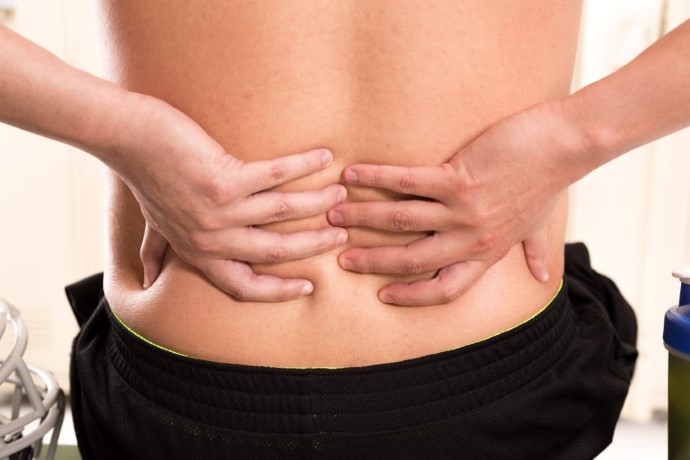Many happiness researchers have discovered that about 60% of your happiness comes from things that are within your control. The other 40%… well… that is influenced by genetic/personality and contextual factors – neither of which you or I can do much about. But here’s some tips to give you some control over the stuff you can do something about!!
1. Define your own version of happiness
Happiness is about what you WANT – NOT what you don’t want! Stop allowing yourself to think of happiness as the absence of something! Happiness is not “less stress” or “no money problems”. Less stress is simply, less stress. It doesn’t magically become happiness.
Spend some time really thinking of what happiness would look like if you could see yourself happy. What are you spending time on and with whom? How do you act when you are happy? What does your facial expression look like? What does your tone of voice sound like? Imagine a week in the life of this happy version of you. How do you spend your free time? What activities do you participate in? Who do you spend most of your time with? This exercise can be very helpful in clarifying what is most meaningful to you. It should provide you with a list of activities, relationships and behaviours that you can start engaging in RIGHT NOW.
“You cannot always influence what you experience from the outside but you are always able to influence how the outside world experiences you.”
2. Be realistic and flexible – don’t expect it to feel like fireworks

So what does happiness feel like? Most of us have experienced a number of times when we have felt very happy or joyous. Joy, while very pleasant, like any feeling is impermanent and fleeting. Happiness is often described as a feeling of deep satisfaction, gratitude and vitality. It is not the experience of a momentary emotion, but rather more long lasting.
It is like the memory of a happy vacation… We may recall this as a happy time, with the experience of many pleasant and warm emotions but we may not have been feeling fireworks the whole time (and quite frankly TG! ). You may have even experienced moments such as sadness, anger, frustration, loneliness or anxiety during this ‘happy’ time. Unpleasant experiences do not negate your happiness. In fact, unpleasant emotions are just part and parcel of everyday healthy, happy living. Happiness is about more than just an emotion. It’s the recognition that your life is full of people, activities, pursuits and passions that are meaningful to you.
“Put simply, happiness comes from being proud about the way you live, who you are and what you stand for – and that path ain’t always easy or joyful!”
3. Schedule 2 – 4 things each week that bring you happiness
So now that you’ve defined what happiness is for you, and you know not to expect it to feel joyous and exciting the whole time, you should go ahead and commit to engage in at least 2-4 more activities that are meaningful for you each week.
Be realistic, plan well and ahead of time, alert others and muster all the grit you have to just get out there and start making small additions that may have big payoffs in the long run. It may mean that yo may have to forego a loved activity (such as watching the latest G.O.T episode) to get to that sports game or wake up earlier to get the dinner cooked before you leave for work in the morning so that you can go for a sunset walk on the beach in the evening. This may sound too tough to do, but think of it like this – how happy does not going for a walk at sunset make you? What motivates me to get up 1 hour early to exercise or cook is this – no one lies on their death bed reminiscing about how great that extra hour of sleep felt, or how awesome it was to watch TV at night.
“Rest and relaxation are not the same thing. You’ll recharge your batteries and feel relaxed more by engaging in a meaningful activity than by resting.”
4. Take in the good – create lasting impressions of happiness
In Hardwiring happiness, Rick Hanson, Ph.D. Clinical Neuropsychologist and Mindfulness expert, has written an amazing and well-researched handbook on using the new science of neuroplasticity to improve your brain’ s capacity to experience happiness. The technique, which he breaks down into simple steps, involves learning to recognise when you are experiencing a happy moment, to pause and to really experience this feeling and moment in it’s entirety. Most of your feelings will manifest between your neck and lower abdomen so really focus your attention on these regions. Notice in detail how happiness feels in your body. Take deep breaths and allow yourself to just notice this experience. Now that you have had this in depth experience of happiness, make a point of trying to recall that experience throughout your week. Work hard to recall the sensations of happiness in your body. You may soon find yourself smiling!
5. Take care of your business!
Let’s revisit the first point for a second. Recall that our definition of happiness was important in defining the person we need to work on being. While most of us don’t want to be cleaners, bankers, clerical administrators, grocery shoppers, personal assistants etc etc, being able to engage in these roles is necessary to maintain stability, order and calm. Constantly putting off activities that on the surface do not seem meaningful to you only ends up creating chaos, overwhelm and may just end up stopping you from being able to reliably engage in meaningful activities. Whether it’s activities at work you are always putting off, or always forgetting to do your internet banking, never getting on top of your housework, laundry or other necessary activities is the number one cause of ongoing underlying stress and usually the ‘straw’ that breaks the proverbial back. Taking care of your business is meaningful – it’s about who you are as a person. Being consistent and organised with your housework (doing a little every day) allows you and your family to enjoy the comfort of a neat and organised home (whom ever walked into a beautiful hotel suite and thought the neatness and niceness was stressful – no. one. ever!). While cleaning may not be meaningful, giving yourself the gift of a comfortable and relaxing space is. Setting aside an hour a week to do your banking, plan your week, schedule your housework and get to all of your clerical duties gives you a sense of responsibility and allows you to take more control of your life. Not many are truly happy when the bills are unpaid and the house is chaotic. Similarly, putting off activities at work that make you nervous or you dislike may only exacerbate how negative you feel about that activity because it is still on your plate. Getting on top of these things finally removes them off your plate, giving you a sense of relief, freedom, achievement and pride in your self. These experiences are worth having, and worth having regularly. If you truly want to be self-compassionate, give yourself the gift of ease tomorrow by getting into the hard work today!
“Self-indulgence and happiness are not the same thing. Don’t let your self-indulgence rob you of true self-compassion.”



